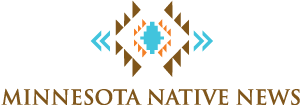This week on Minnesota Native News, the Science Museum of Minnesota is seeking feedback from Native Community members Here’s Diego Luke with the story
Museums have long been a place of fascination, with many housing some of the world’s most important artistic, cultural, historical, or scientific artifacts. The history of museums has been shrouded with ethical dilemmas, some question how some objects were acquired and if some exhibits can perpetuate stereotypes and do more harm than good.
The Science Museum of Minnesota is trying to answer some of these questions with the help of community members.
I was lucky enough to be given a tour of the Native American exhibit: We Move and We Stay.
“I’m David Valentine, I’m a community engagement specialist here at the Science Museums of Minnesota. I’m half black, a quarter Native and a quarter white and um, my Grandma, my aunts, my uncles, my cousins all live in a reservation in British Columbia, so I’ve always felt like really connected to the indingeous side of my culture.”
Valentine said what drew him to the Science Museum of Minnesota was that most museums are all talk and no action when it comes to Indigenous recognition. But he felt he was given the resources and support to make a positive change here.
“A lot of community engagement is like, “the museum is designing this event and it’s for Indigenous Peoples Day and we’re gonna hire Native dancers to come in and we’re gonna hire someone to come in and do a poem.” They’ve already kind of decided what the engagement is gonna look like before they ever reach out to anybody. And so most of my work last year was built around upsetting that and saying, “what does it look like when you bring community in from the start?” said Valentine.
Valentine said that instead of drafting a land acknowledgement like most white-led institutions, the Science museum wants to shift the goal to acknowledging the damage colonialism caused.
“I couldn’t write an acknowledgement of harm for this institution because I don’t know what harm we’ve delivered to the community in the past and I think that can be said for most museum workers.
Land acknowledgements kind of piss me off a little bit sometimes. Where like, white led organizations, white board saying they acknowledge this land that they stand on, but it’s not really backed up with very much action. There isn’t like a tangible plan built into peoples land acknowledgements and no way to check for accountability. And so I figured before building a land acknowledgement with the community, it would be good to have both a knowledge of all the work we have done and all the places where we have fallen short and a solid foundation of like, community work for that work to sit on,” said Valentine.
I asked Valentine what he wanted people to take away when visiting We Move and We Stay as well as future indigenous projects.
“I want to subvert this idea that science and scientists are like these white folks in lab coats doing their experiments in some ivory tower. And have indigenous folks feel represented and see themselves without having to try and fit themselves into that box. Indigenous people have been doing science and are continuing to do very important science throughout history,” said Valentine.
Valentine has taken on the task of gathering perspectives from Native people and incorporating it into exhibits. His team is in the process of holding feedback sessions regarding indigeneity. That has moved things forward, especially
“Rather than coming here to find out about what white scientists think about indigenous life, and look and see the important work people are doing around Minnesota and beyond that has moved things forwards in terms of environmentalism and food sovereignty and astronomy and all these different areas indigenous people have just always been with. We’re hoping to let our past lead us forward,” said Valentine.
The feedback sessions will be virtual and last around two hours, and each participant will receive a $50 visa gift card as an honorarium.
“If you mess up a community partnership with folks once, it’s not just a mistake, like, in that moment, it’s also a mistake for the future because indigenous communities remember things they’ve been through with and they talk to one another. So if you’re trying to do long term beneficial work, your work needs to be informed about the community and you need to make sure you’re not messing up partnerships and relationships because it’s going to stop you from building those bridges in the future,” said Valentine.
You can be a part of the feedback sessions by emailing at dvalentine@smm.org
Diego Luke reporting for Minnesota Native News
Minnesota Native News is produced by Ampers- Diverse radio for Minnesota’s communities. Made possible by funding from the Minnesota Arts and Cultural Heritage Fund and the citizens of Minnesota.
Subscribe to Minnesota Native News in your favorite podcast app
- New Native Theatre’s 15th Year & REAL IDThis week, how REAL ID requirements impact Indigenous people, especially Two-Spirit individuals. Also, New Native Theatre’s latest play runs April 16-May 4.
- Ziigwan Biidaajimowin (Spring News): NACC Issues Call for Artists and Little Earth Kicks Off American Indian Month with a ParadeThis week, Minneapolis’s Native American Community Clinic (NACC) seeks artists to commission pieces for their new building. Plus, nearby, the Little Earth of United Tribes housing community will kick off May’s American Indian Month with a celebration organized in part by the Minneapolis Public Schools American Indian Youth Council, Ogichida Oyate


 Booster Shots Urged for All Adults 18+ and MN National Guard Members Train as Nursing Aides
Booster Shots Urged for All Adults 18+ and MN National Guard Members Train as Nursing Aides